As winterizing gets underway, the question keeps coming up: Can’t we do something about all this plastic?
By Hugo Kugiya of SAIL Magazine
Sailors like to think their fuel comes free. The wind, currents, the natural movements of the sea, and the sun power their journeys—a source of pride and the origin of the myth that sailors are stewards of the oceans and protectors of the environment.
The truth is a bit more complicated. Sailors do use fossil fuels too, of course, and we make some unavoidable impact on the planet. The world of sailing is a plastic one: fiberglass hulls, dacron sails, canvas that is actually polyester, running rigging made of synthetic fibers, plastic clothing, plastic dishware, plastic containers, all manner of parts made of plastic.
There is no getting away from it. The qualities of plastic are not just convenient, but critical, arguably a matter of life and death. Plastic also made sailing more democratic and accessible. It has made boats safer and last longer. To extend their usable lifetime even more, before the northern winter begins we ceremoniously wrap our boats in yards and yards of plastic. But the practice of using marine shrink wrap to protect boats can be an angst-filled ritual for some of us. It’s a bad look, so much plastic.
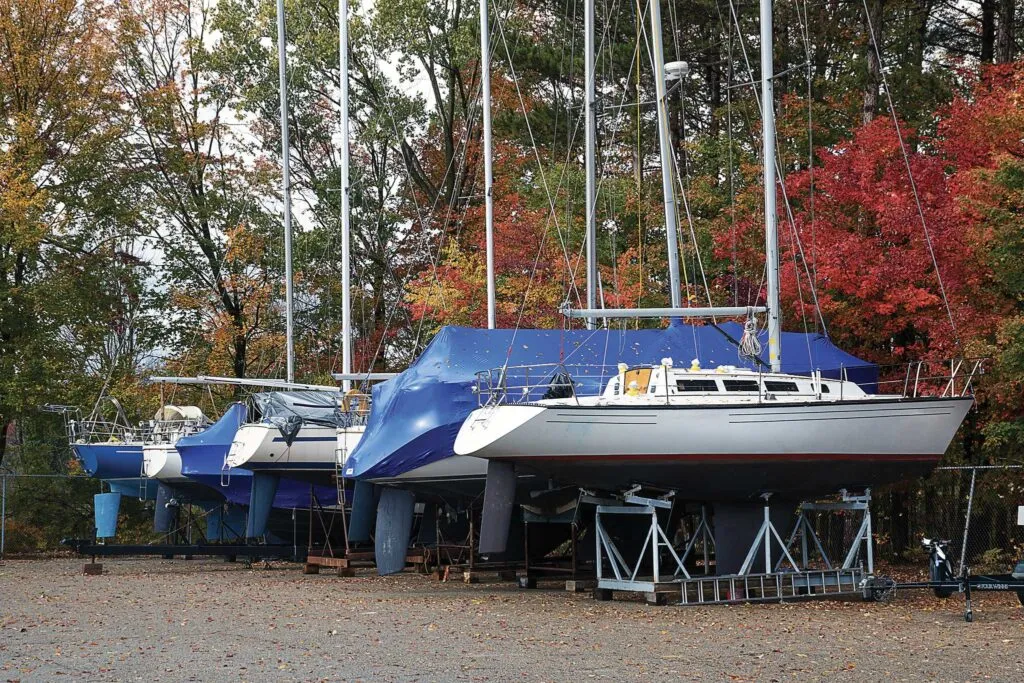
Whether or not you wrap the boat comes down to the wear and tear in your local climate.
So what do you do?
Again, the truth here is complicated, and it depends on a lot of factors. “I wish there was a simple easy answer to give,” says Alanna Keating, the director of outreach for the BoatUS foundation, “but there is no silver bullet. It’s not black and white. What we tell boaters is ‘think before you shrink.’ ”
Shrink wrap is among the least expensive options to cover a boat for winter. Custom and semi-custom covers are the most expensive. They require significant space to store when not in use, so this option might be more practical for small boats and less so for large boats. They can last for years, which makes them seem like the eco-option, but even custom covers are made of synthetic fibers (a form of plastic) in most cases and will someday end up in a landfill.
The cheapest option is a reusable tarp or no cover at all. No protection will likely mean more wear and tear, more maintenance costs, and possibly unforeseen damage.
“It depends on what kind of access you have to your boat,” Keating said. “How close do you live? What’s winter like where you are? And how long do you plan to leave it out?”

Recycled shrink wrap is turned into these plastic beads. Photo Courtesy of Kyle Richter
The recycling rabbit hole
For those who opt for shrink wrap, the most conscientious decision would be to recycle it, but that’s not often an option. Most marine areas don’t have recycling programs. The market for recycled plastic is small and dwindling. The value of recycled plastic is low because virgin plastic is cheaper to produce and is of a higher quality. Marine shrink wrap is always made of virgin plastic and never recycled plastic.
For several seasons, the boaters of Lake Hopatcong have successfully recycled their shrink wrap, but they’re the lucky ones. They happen to have a nearby recycler willing to bear the cost of collecting and transporting the waste.
Kyle Richter is executive director of the Lake Hopatcong Foundation, named for New Jersey’s largest body of freshwater. That’s not saying much as the state’s lakes are small—but the four-square-miles that make up Hopatcong are some of the most used around. About 2,500 homes and a half dozen marinas line the shores of the man-made lake. People swim, water ski, fish (the lake is stocked annually), and sail on the lake. And at the end of the summer, most of the boaters who use the lake wrap their boats, Richter says.
For the past three years, the community has recycled most of it, handing it over to a local recycler called Ultra-Poly Corporation. It provides dumpsters and places them at the waterfront, near the marinas where the boats are stored. Then, Ultra-Poly transports the full dumpsters, at its own cost, to its plant in Pennsylvania about 40 minutes away, where it turns the material into pellets used primarily to make plastic garbage bags and composite deck boards.
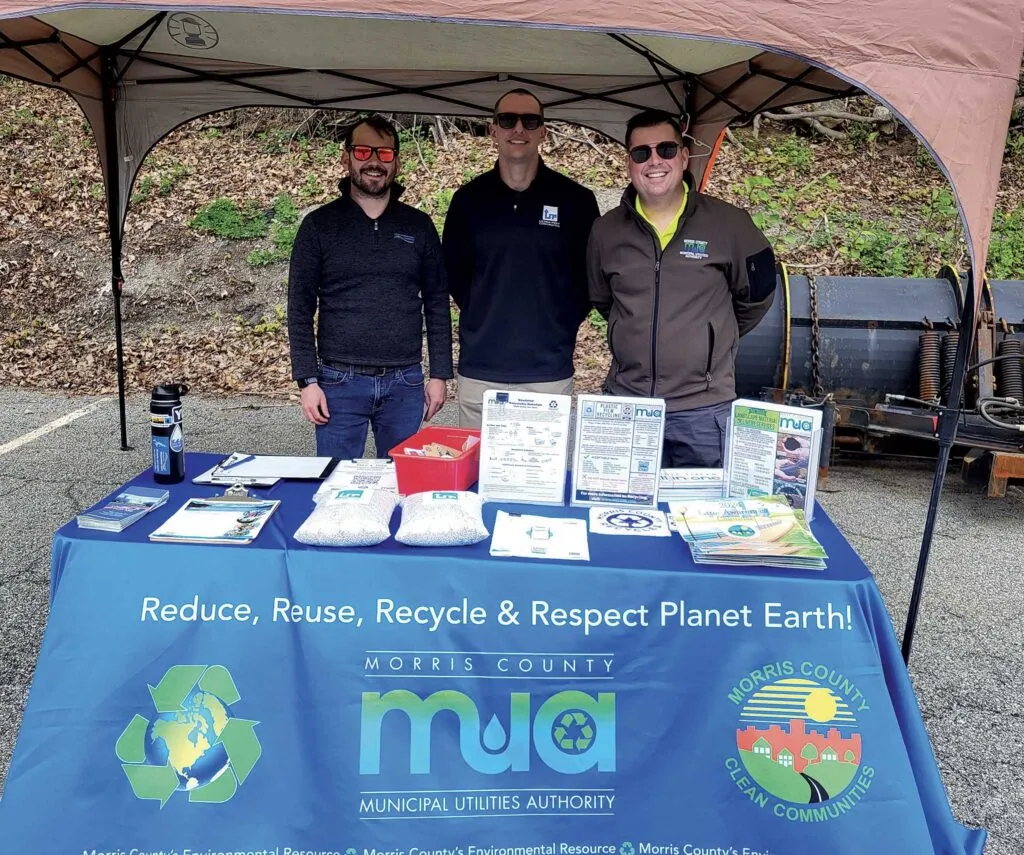
Community organizations that help recycle shrink wrap are rare. Photo Courtesy of Kyle Richter
The Hopatcong Foundation recycled eight tons of shrink wrap in 2023, 19 tons in 2024, and 22 tons in 2025, and hopes to become a magnet of shrink wrap recycling for the surrounding communities for as long as their benefactor Ultra-Poly wants to continue the arrangement.
And it’s not just Richter’s community. Barnstable County on Cape Cod has run a successful, local marine wrap recycling program since 2018, collecting 46 tons of waste in 2024.
Richter is the first to admit these communities are the exception to the rule. He struggled to find a willing recycler before the agreement with Ultra-Poly. “I was hitting a lot of dead ends. There wasn’t a willingness to take this material. And there were so many obstacles.” Some insisted they couldn’t transport it, or that the wrap had to be cut and baled before they would accept it, or that it had to be completely clean and dry. In other words, it just wasn’t feasible.
Before trying to untangle that knot for your local marina, though, consider that the merits of recycling plastic have been widely renounced by environmental advocates, who have called out the practice as mere public relation programs by the industry that makes plastic, a smokescreen that makes consumers feel better about using plastic and allows the industry to produce more.
In fact, the market for recycled plastic often relies on state intervention and local laws that require a certain amount of recycled plastic to be used in the making of, say, plastic bags or beverage containers.
A small percentage of plastic we consume in the U.S. is recycled; most end up in landfills or is incinerated. The Department of Energy found that about five to six percent of all plastic gets recycled. According to the U.S. Environmental Protection Agency, 14.5 million tons of plastic containers and packaging were generated in 2018. Less than two million tons were recycled; about 10 million was put in landfills, and 2.5 million burned.
While it works well for some local communities and their industry partners, most boaters should not count on recycling as an avenue for disposing of their shrink wrap. For all intents and purposes, you should assume your used wrap will get buried.

Members of the Lake Hopatcong community use designated dumpsters from Ultra-Poly Corporation to send their used shrink wrap off for recycling. Photo Courtesy of Kyle Richter
How big is the problem?
Marine shrink wrap is made of low density polyethylene. It is soft, flexible, durable, and resists water and chemicals. It’s one weakness is heat, which of course, is an advantage when you’re trying to shrink it to fit tightly over a boat. Garbage bags are made of the same thing, with boat wrap being a heavy duty version of the same material.
Data for how much marine wrap is used each year is scarce and based on estimates. A 2021 study conducted by four University of Maryland graduate students found that in the state of Maryland, at least 943,000 pounds or 472 tons of plastic wrap is used annually. The estimate presumed that about 37 percent of boaters in the state wrap their boats each year.
Another group, the Marine Trades Association of Maryland, came up with a lower estimate for annual use of about 234 tons, based on a survey of the state’s large marinas.
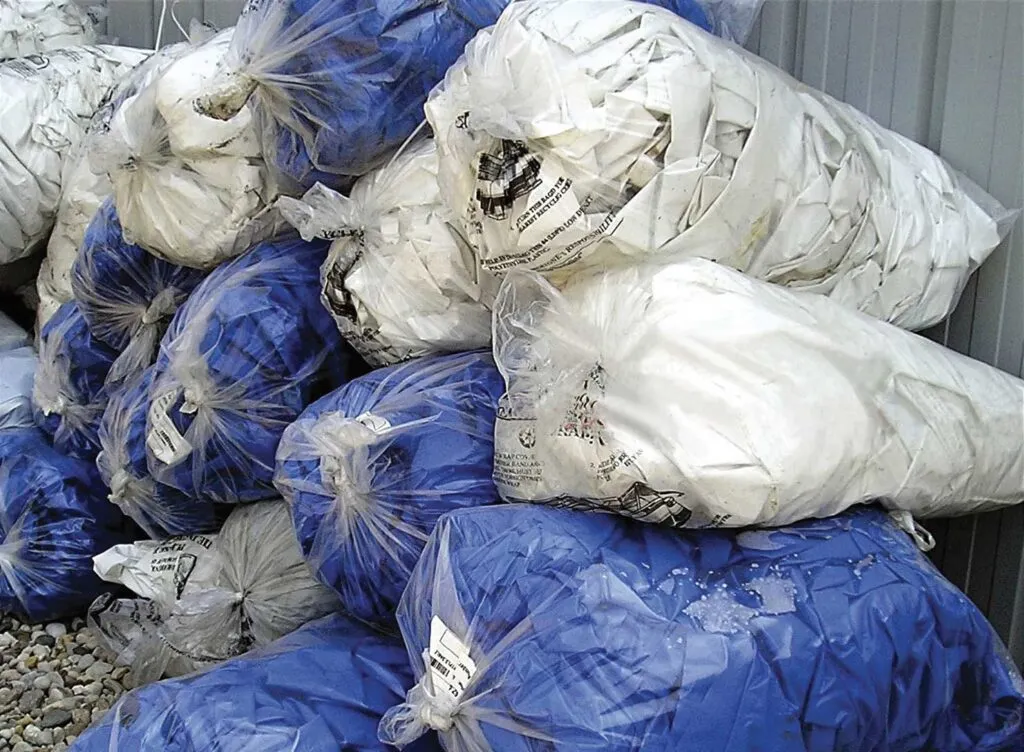
Photo Courtesy of Stacey Negrow-Wigmore
The (now defunct) Rhode Island-based nonprofit, Clean Ocean Access, estimated several years ago the national annual usage to be 23,000 tons on the low end and 62,000 on the high end. Their figures factored in the number of registered boats in states with average winter temperatures below 32 degrees and assumed about half of those boats were wrapped each winter.
To put that into perspective, the amount of total plastic waste generated in the US each year, most of it from packaging and containers, is in the tens of millions of tons, conservatively estimated to be around 30 to 40 million tons—the U.S. is among the world’s largest consumers, if not the largest, per capita, of plastic. Those numbers suggest marine shrink wrap is a relative drop in the bucket, a fraction of a percent.
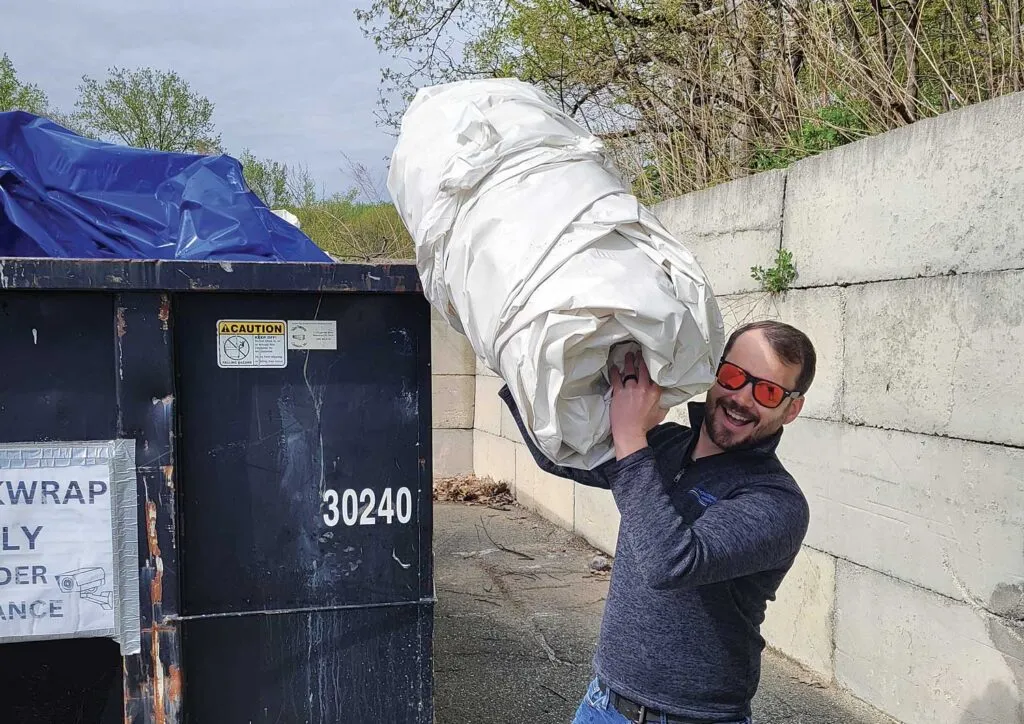
Photo Courtesy of Kyle Richter
Landfills, and then what?
Rhode Island-based Bioaqualife makes a brand of marine shrink wrap that it claims will break down in three to four years in a landfill. According to its founder Simon Milne, the product will not shed microplastics and will be digested in the absence of oxygen by microbes. The company claims the microbes release enzymes that break down the plastic into organic molecules.
Bioaqualife’s chief marketing officer Nataliya Zagorodnova explained: “This formula invites microbes naturally occurring in the landfill to recognize our plastic as food and consume it. In other words, the microbes are already present in landfills—our technology simply makes the plastic digestible to them.”
To be clear, the product is not compostable plastic made with an organic material like corn (these plastics have their own problems and critics). Like all plastics, Bioaqualife shrink wrap is a petroleum product.
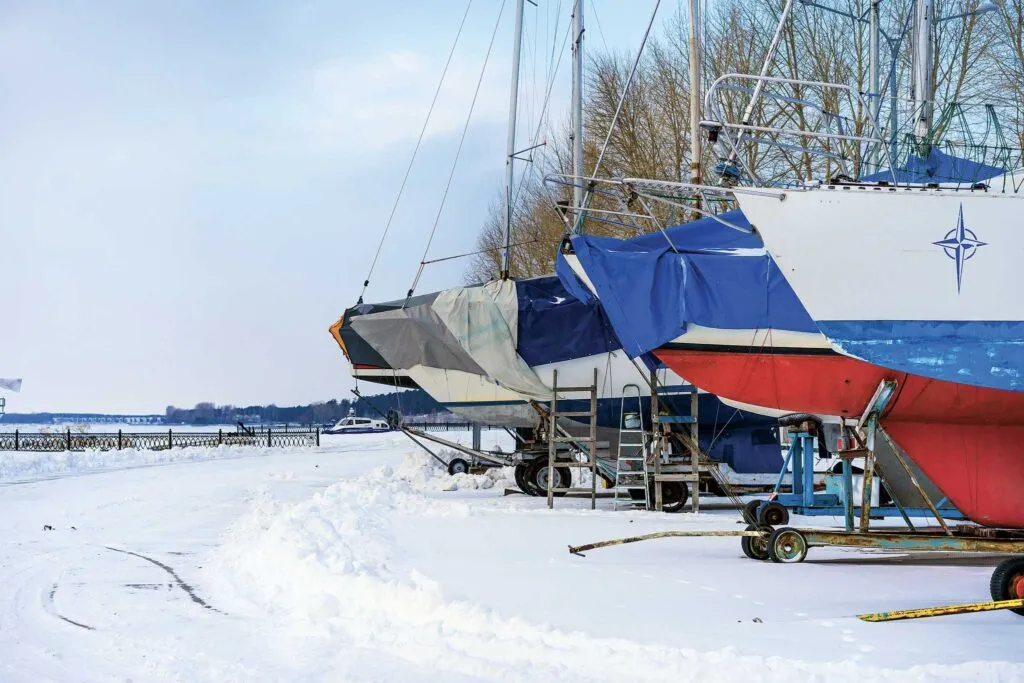
Though shrink wrap is more protective against the elements, a well-secured tarp may also be a good, reusable solution. Photo by KseniaJoyg/Adobe Stock
All plastic will break down eventually (if you have a few millennia to wait). In a much shorter time, it will break down into microscopic particles, which we now know have infiltrated every nook and cranny of the planet, from Arctic snow to the bloodstream of every single human being. Its harmful effects are being studied, but much is still unknown.
Current scientific orthodoxy holds there is no such thing as biodegradable plastic. For that reason, some states (California, Washington, Maryland, and Minnesota) have laws that prohibit the sale of plastic products labeled as biodegradable. For now, that is the widely accepted truth of plastic, although the concept of microbes that eat plastic is tethered to established findings.
For example, bacteria present in oceans have been found to break down oil spills. Microbes might someday become widespread technology of the future. The exact nature of Bioaqualife’s product, however, is not yet part of established science. It’s still emerging science. What we do know is that like most plastic, it goes to a landfill.
But in the scheme of things, that alone might not be a bad thing. The integrity of U.S. landfills is high. They are contained, managed, regulated, and remain our best scalable option for plastic disposal.
So, if you determine marine shrink wrap is your best, most practical option for protecting your investment, you ought to sleep well sending your used wrap to a landfill, whether or not it becomes food for microbes.

A blue wrap may get warmer in the sunlight and reduce snow and ice build up. Photo Courtesy of Stacey Negrow-Wigmore
Plastic, plastic everywhere…
“I don’t think I’ve ever seen boat wrap wash up on a beach, except maybe after a hurricane,” said Jan Dell, a retired chemical engineer who, in 2018, left a long corporate career working for petroleum companies to run a one-person nonprofit called the Last Beach Cleanup, a reference to the plastic waste that ends up in the world’s oceans and washes up on beaches.
“Boat wrap gets collected, and it goes to safe landfills,” she says, but the more immediate dangers to marine ecosystems are small-scale single use plastics that are often not disposed of properly, like plastic bottles and food packaging.
After years of helping companies make more and more plastic, her conscience compelled her to advocate for using less. Much of her efforts have been spent dispelling the misinformation and misconceptions about plastic recycling. She led an effort in California to create a landmark truth-in-labeling law for plastic waste. Starting the fall of 2025, companies are prohibited from putting recycling symbols on products that are not actually widely recycled. She has become the charismatic evangelist for the conscientious consumption of plastic.
But, she makes it clear she is not anti-plastic, lauding its use in durable goods such as vehicles, medical equipment, furniture, clothing, and yes, even a sailboat.
“Plastic enables more people to have boats, more people to get out and enjoy the water,” she says. “It’s a great pastime that brings us pleasure that lasts for years.” Not to mention that people who spend time in nature tend to care more about protecting it, so accessible boating might have some further environmental benefits downstream.
So where does that leave us?
At first glance, certainly it would seem like nixing shrink wrap is the right choice for the environment, but it turns out that the decision is more complicated than that—and makes less of an impact than you would hope.
If you keep your boat in a cold climate, here are the main things to keep in mind as you decide whether to wrap:
• Recycling is not likely to be a widespread solution—for all plastics not just shrink wrap. So focus on re-using, not recycling. You might incur more labor costs, but you would cut your impact in half by using the same wrap twice.
• The vast majority of shrink wrap ends up in a landfill, but American landfills do a reasonably good job containing the contaminants, which in the scheme of things is one of the safer end stages for single-use plastic. Ultimately, though, it’s a small fraction of the waste out there.
• Reusable covers are made of synthetic fibers, in other words more plastic, so think of them as simply more durable versions of shrink wrap. They are also more expensive, require storage, and use more material. So, do the math and be sure you’ll get many seasons of use.
• If you don’t cover the boat and the additional wear and tear leads to the use of more toxic materials and harsh chemicals for repairs, then you’re trading one pollutant for another. This is perhaps an option best reserved for a relatively mild climate or a boat you can frequently check.
In the end, all options for winterizing are imperfect, so banishing shrink wrap shouldn’t become our sustainability white whale. Instead, we should avoid it when reasonable and continue to do our part year-round to reduce the plastic pollution that harms our oceans.
November 2025